لقد تواصلت مع مربي النحل المحليين في كيب الغربية بجنوب أفريقيا وبيتر من شركة A1 Honey الذي كان يربي النحل لمدة 30 عامًا كجزء من تقليد عائلي. عاد بيتر إلى هذه الممارسة بعد تقاعده من وحدة الاستخبارات الخاصة في كيب تاون. يحصد بيتر حوالي أربعة أطنان من العسل سنويًا، وينتج عسله من شجر الكينا أو الفينبوس أو متعدد الأزهار، ويدير أعماله الصغيرة من منزله والفناء الخلفي. لديه عدد متزايد من خلايا النحل التي تنتج 4 أطنان سنويًا، وتحتفظ خلاياه في مزارع ضمن دائرة نصف قطرها 20 كم من منزله.
هل تربية النحل في دمك؟
يعود تاريخ هذه العادة إلى عائلتي. كان جدي صيادًا وكان يعود من رحلاته ومعه عسل بري. وكان يستبدل الشمع بالملح أو غيره من السلع في المتجر المحلي. وفي الخمسينيات من القرن العشرين، كانت والدتي تُعرف باسم "امرأة العسل" في نادي البولينج الخاص بها في كيب الشرقية. وكانت تبيع فائض عسلها للأصدقاء والجيران. كانت تبيع 500 جرام مقابل 25 سنتًا في ذلك الوقت، والآن نبيعها مقابل 55 راندًا. وعاشت حتى بلغت من العمر 94 عامًا. لقد نشأت وأنا أتعلم من والدي أيضًا. واليوم لا أحب شيئًا أكثر من الجلوس في الحديقة. فلتيد كان ذلك المكان هو المكان الذي كنت أجلس فيه مع والدي وهو يعلّمني تربية النحل والحياة، ويشرب القهوة ويأكل الخبز. وما زلت أفتقده حتى يومنا هذا.
العملية
يأتي العسل من الخلايا الموجودة على الإطارات، حيث تقوم بكسر الختم باستخدام شوكة (تقنية بيتر، حيث يمتلك النحالون طرقهم الخاصة في القيام بالأشياء).
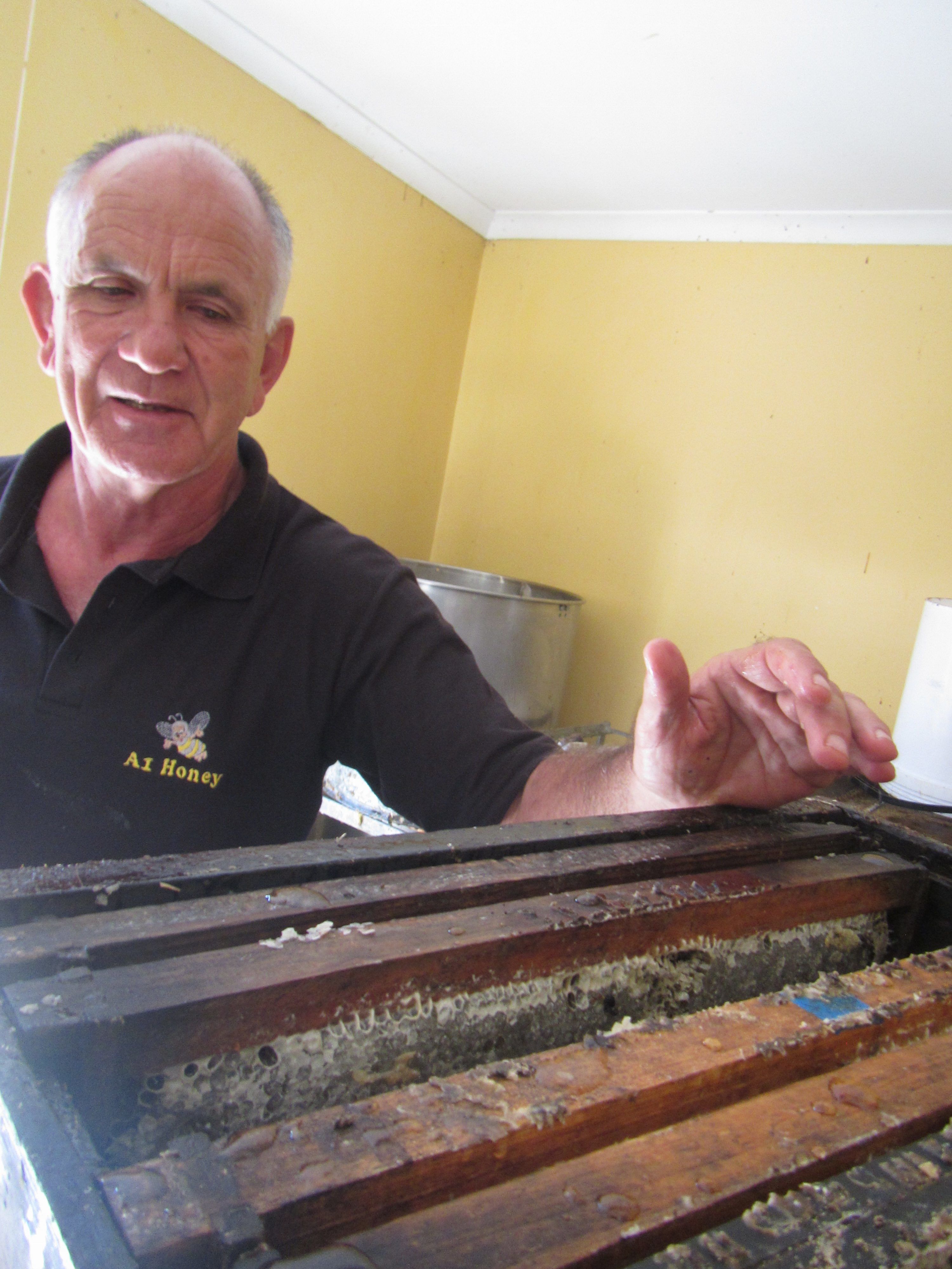
بيتر مع الإطارات التي جلبها من الخلايا
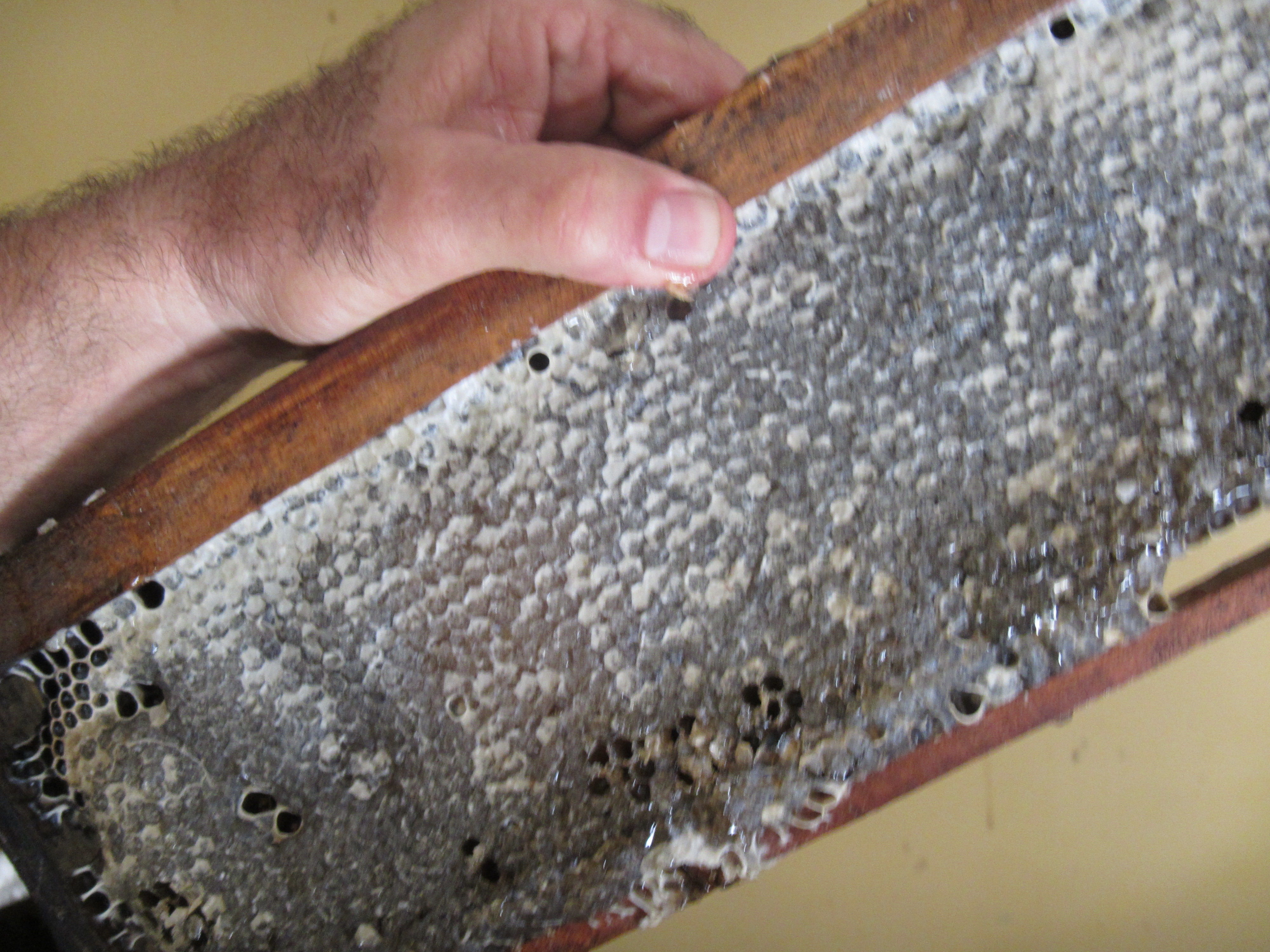
صورة مقربة لإطار يظهر فيه العسل والشمع متصلين بورقة الشمع.
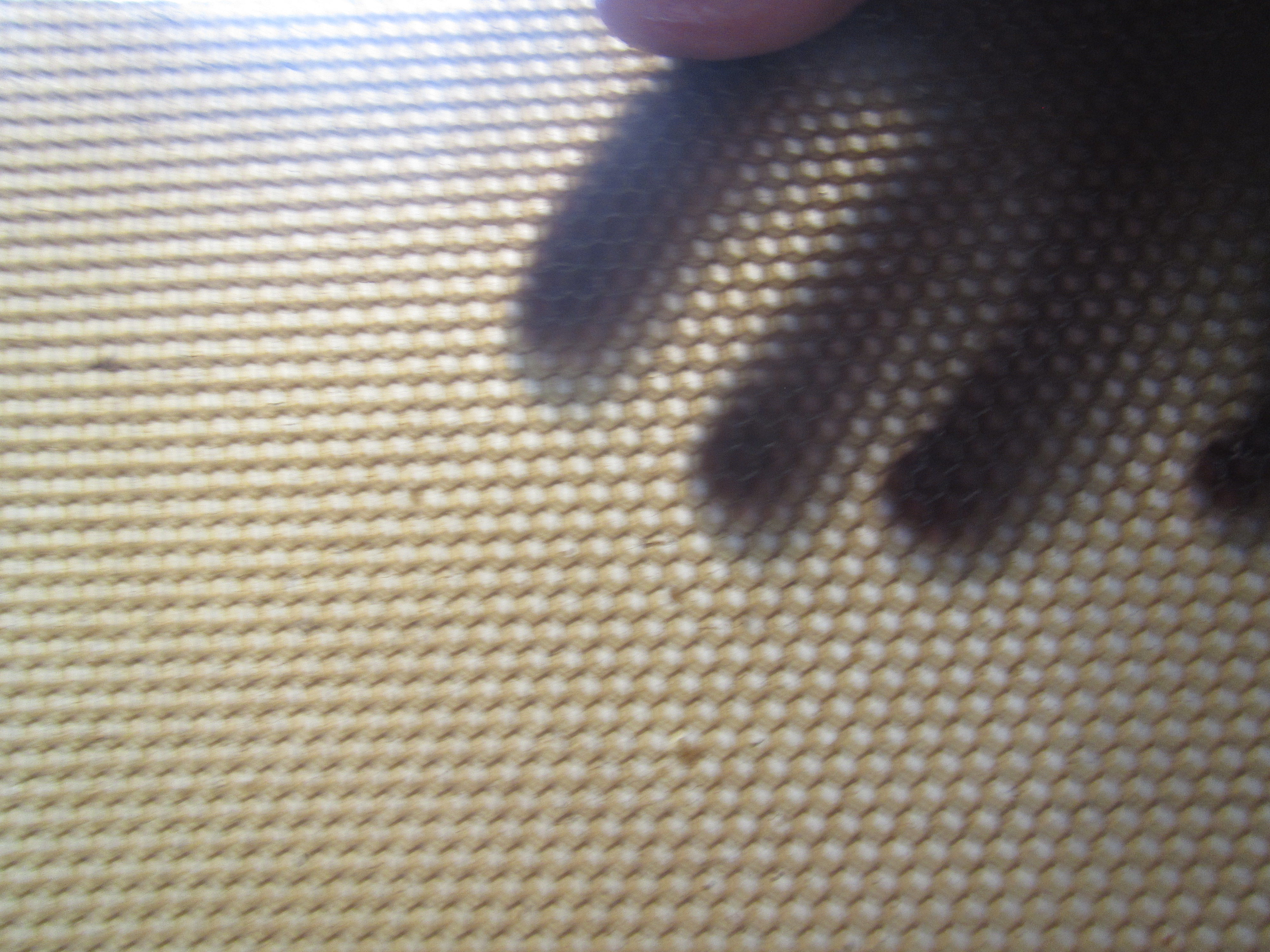
تعود ورقة الشمع، الشمع كمنتج ثانوي، إلى الخلية للمساعدة في تأسيسها
فصل العسل عن الشمع
وبعد كشطه بالشوكة لكسر الختم، يضع الإطارات في آلة تشبه الحوض الأسطواني، وهي آلة تعمل بالطرد المركزي. وتأخذ الآلة 32 صينية، وعندما يتم تشغيلها تبدأ ببطء ثم تتسارع في تدوير العسل حول الجوانب حيث ينزلق لأسفل ويخرج عبر قمع إلى دلو. ويدخل هذا إلى وعاء آخر حيث يرتفع العسل، الذي هو أثقل من الشمع، إلى الأعلى ويوضع هذا العسل النقي في برطمانات.
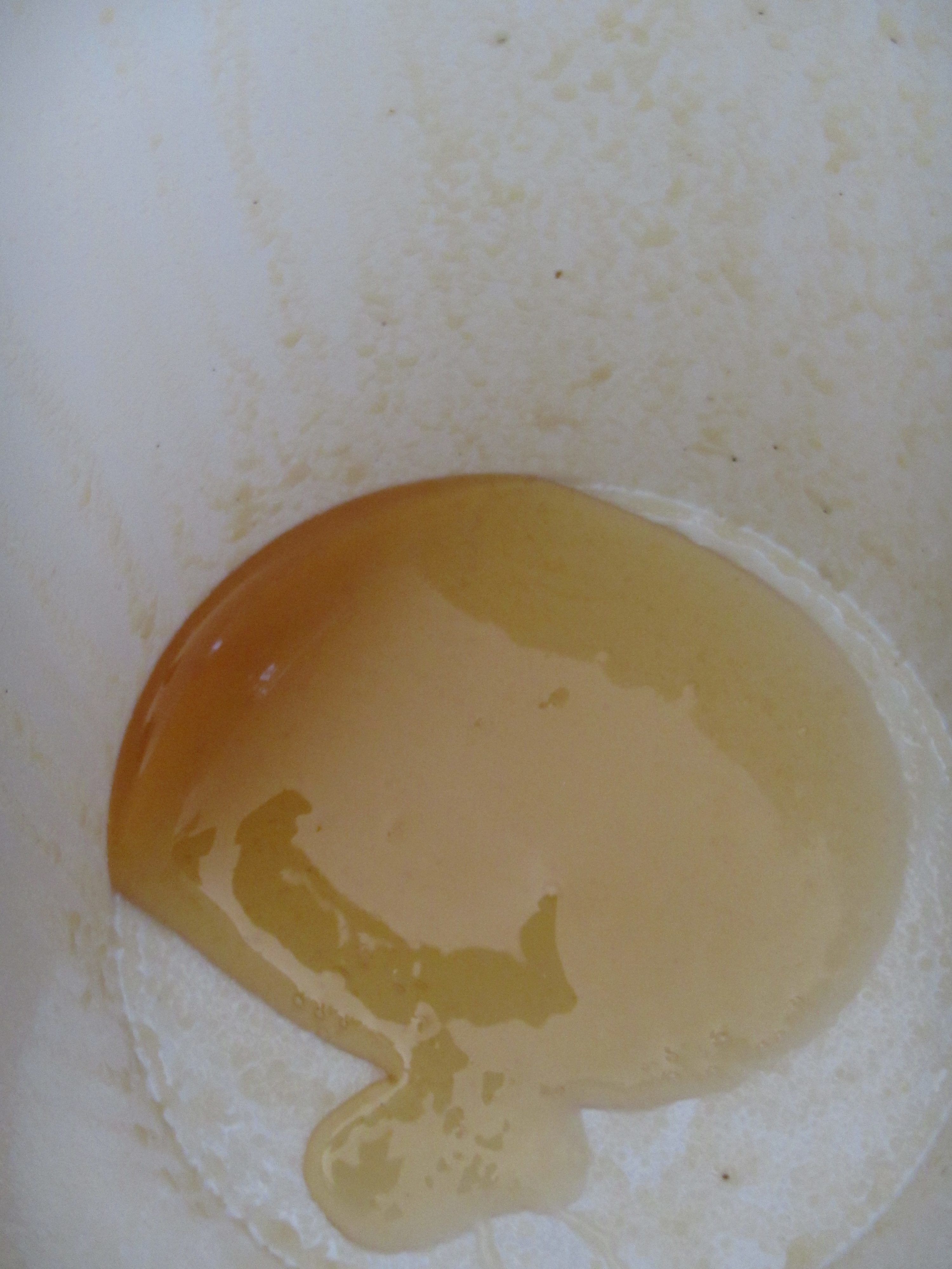
عسل نقي جميل مفصول عن الشمع
يُستخدم الشمع كمنتج ثانوي، حيث يتم تنظيفه عن طريق خبزه في الشمس ثم إرساله إلى مصنع لاستخدامه في صناعة الشموع وما إلى ذلك. ولعملية تربية النحل، يعود الشمع إلى الخلية ويُستخدم كأساس أو في الإطارات التي تعمل عليها النحلات. وفي الصيف عندما يزدهر شجر الكينا بالكامل، تستغرق النحلة حوالي 17 يومًا لملء صندوق، ويعمل بيتر على نظام مكون من صندوقين لكل خلية.
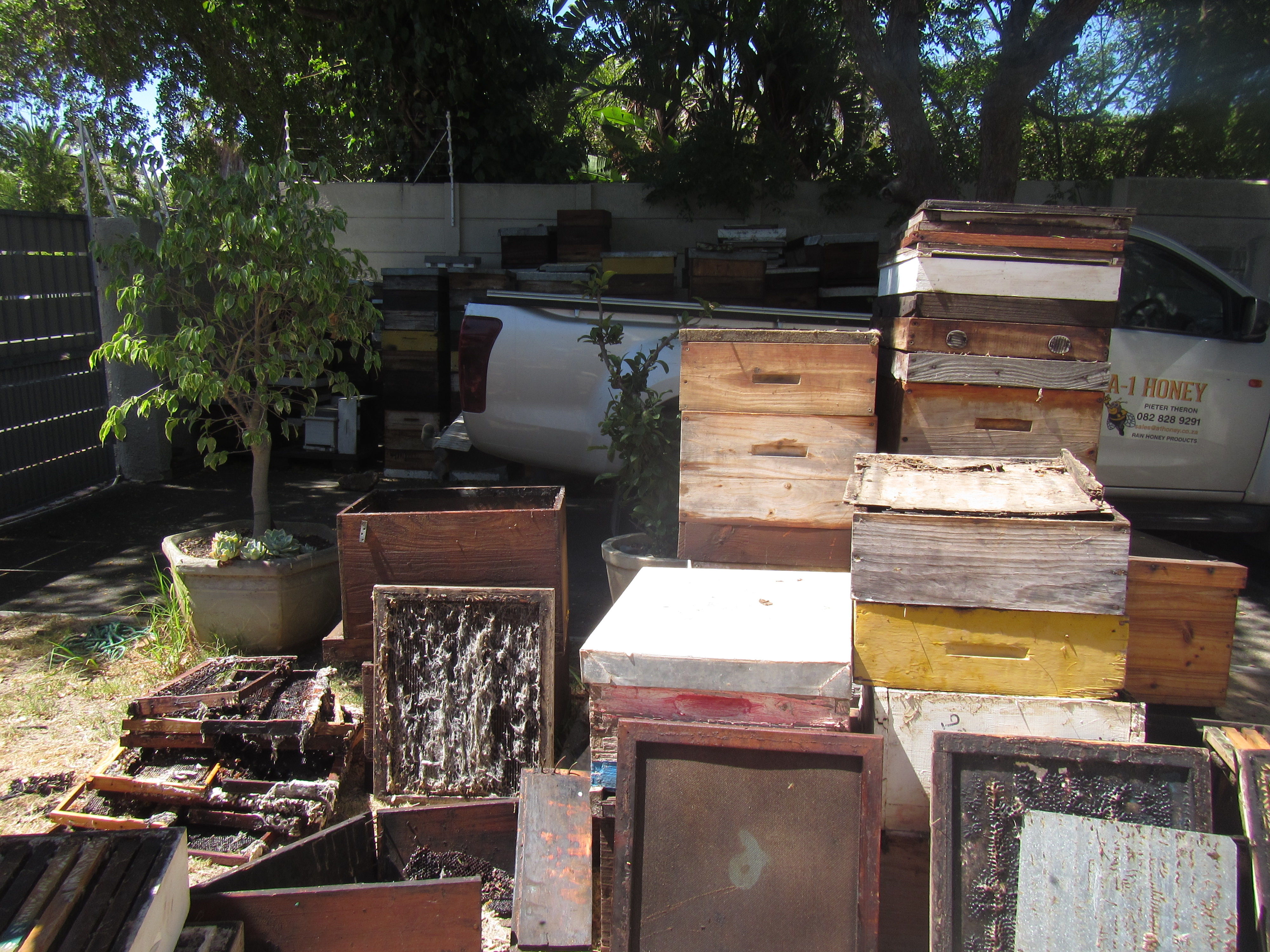
منطقة الصيانة في الفناء الخلفي لبيت بيتر
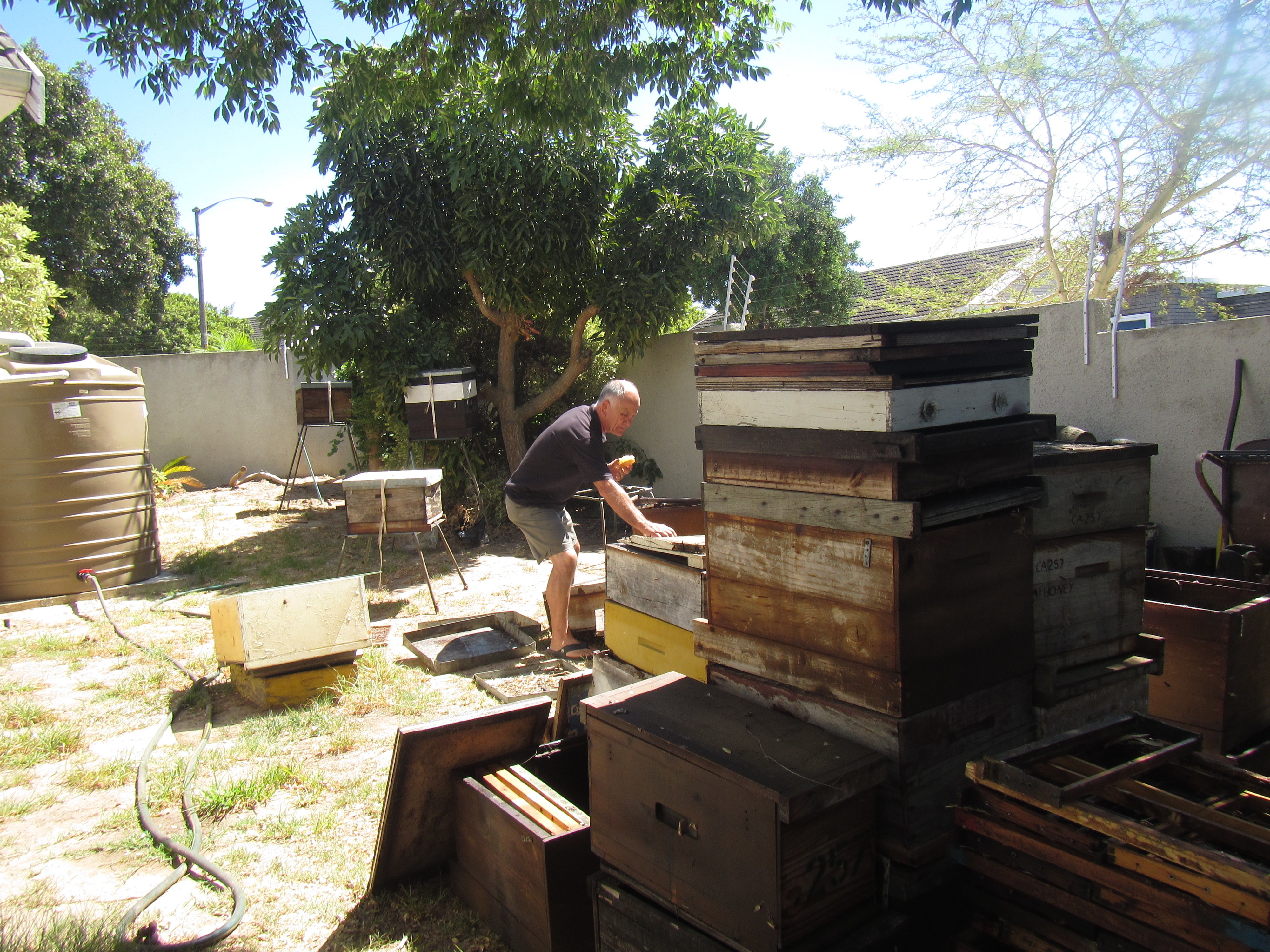
بيتر ينظف الصناديق
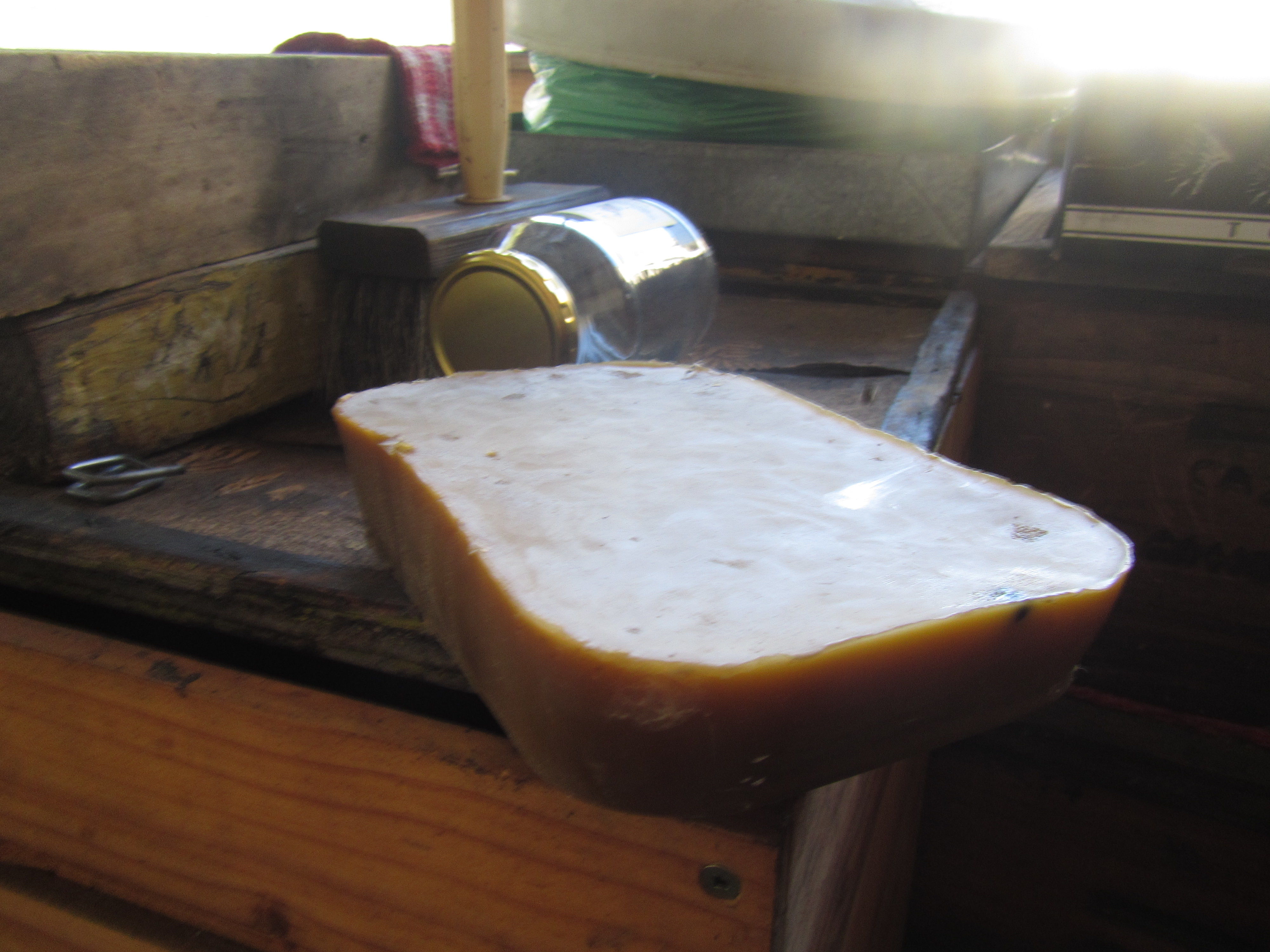
شمع جميل مخبوز بشكل جيد!
كيفية مكافحة المرض؟
أحد أكبر المخاوف هو مرض فيرولا الأمريكي وهذا يمكن أن يقضي على المستعمرات ويدمر سبل عيش النحالين. لا يتم استخدام المضادات الحيوية على الإطلاق في جنوب إفريقيا وهو أمر جيد للمستهلك، حيث يحافظ على نقاء العسل ولكنه يعني عملية شاقة لتنظيف الإطارات والصناديق بعد حصاد العسل. يشرح بيتر كيف يقومون بطهي الإطارات على درجة حرارة 160 درجة لمدة 10 دقائق في الشمع لتنظيف أي جراثيم أو آثار للمرض قبل العودة إلى الخلية. يمكن أيضًا وضع الصناديق في هيبرو للإشعاع كوسيلة للوقاية من المرض.
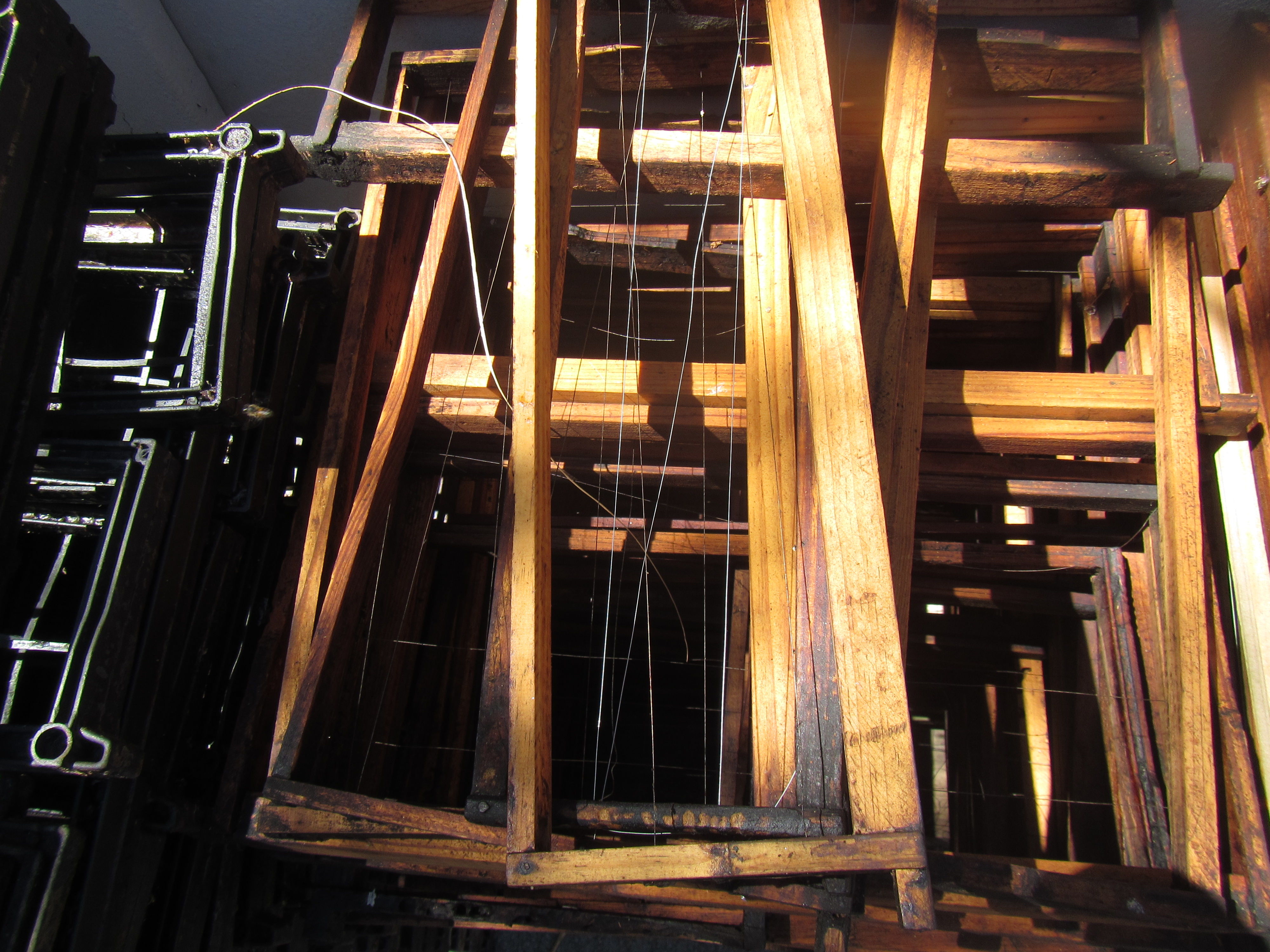
إطارات جاهزة للتنظيف
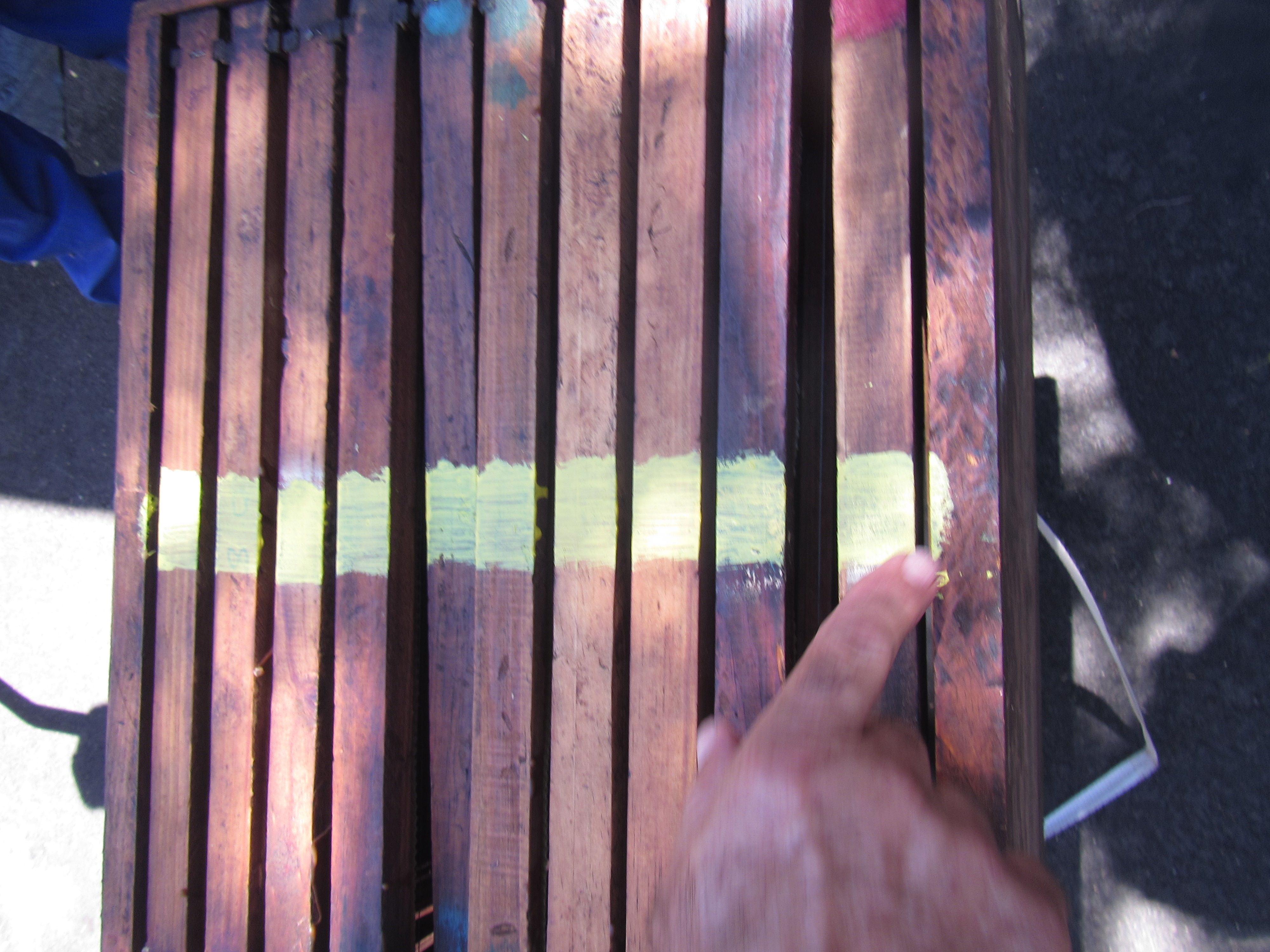
يقوم بيتر بترميز الصواني بالألوان حتى يعرف السنة التي تم فيها وضع الصناديق في الخلايا وحصاد العسل
الدروس المستفادة
لا تأخذ طريقًا مختصرًا أبدًا، وإلا فإنه سيعود ليؤذيك (أو يلسعك).
كيف تحب أن تأكل العسل الخاص بك؟
مباشرة من البرطمان! أنا أيضًا أحب العسل مع السمك، مثل سمك السلمون المرقط الطازج المشوي مع صلصة العسل، وهو أمر خاص جدًا. تستخدم زوجتي العسل كثيرًا في الخبز، وعندما أقوم بتلقيح التوت الأزرق، لا يمكنك التغلب على التوت الأزرق الطازج والزبادي العادي وقليل من العسل. هذا مثالي أيضًا.
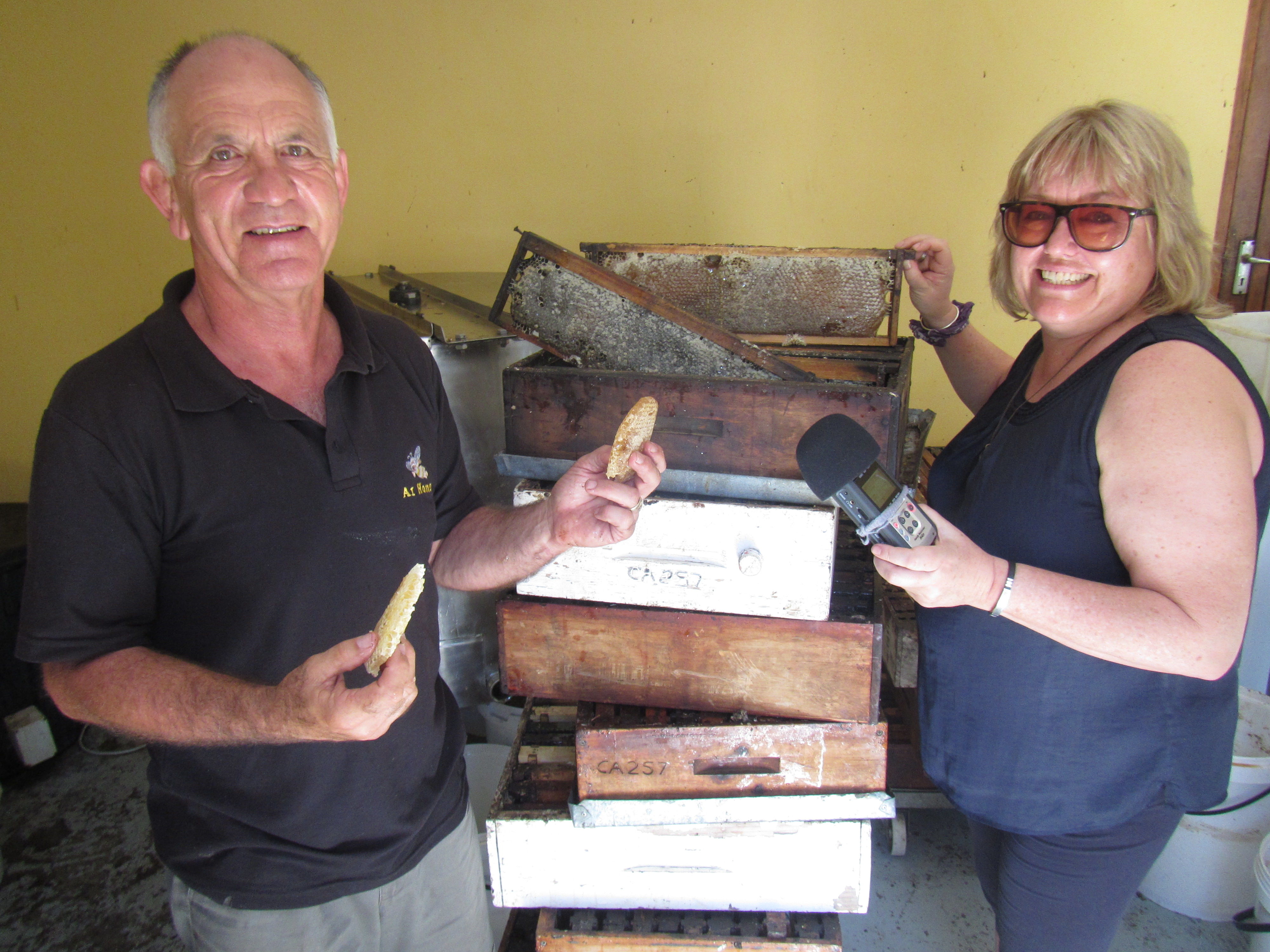
سوزان رادفورد تجري مقابلة مع بيتر لبودكاست HoneyExplorer ويقدم بيتر هدية عبارة عن قرص عسل
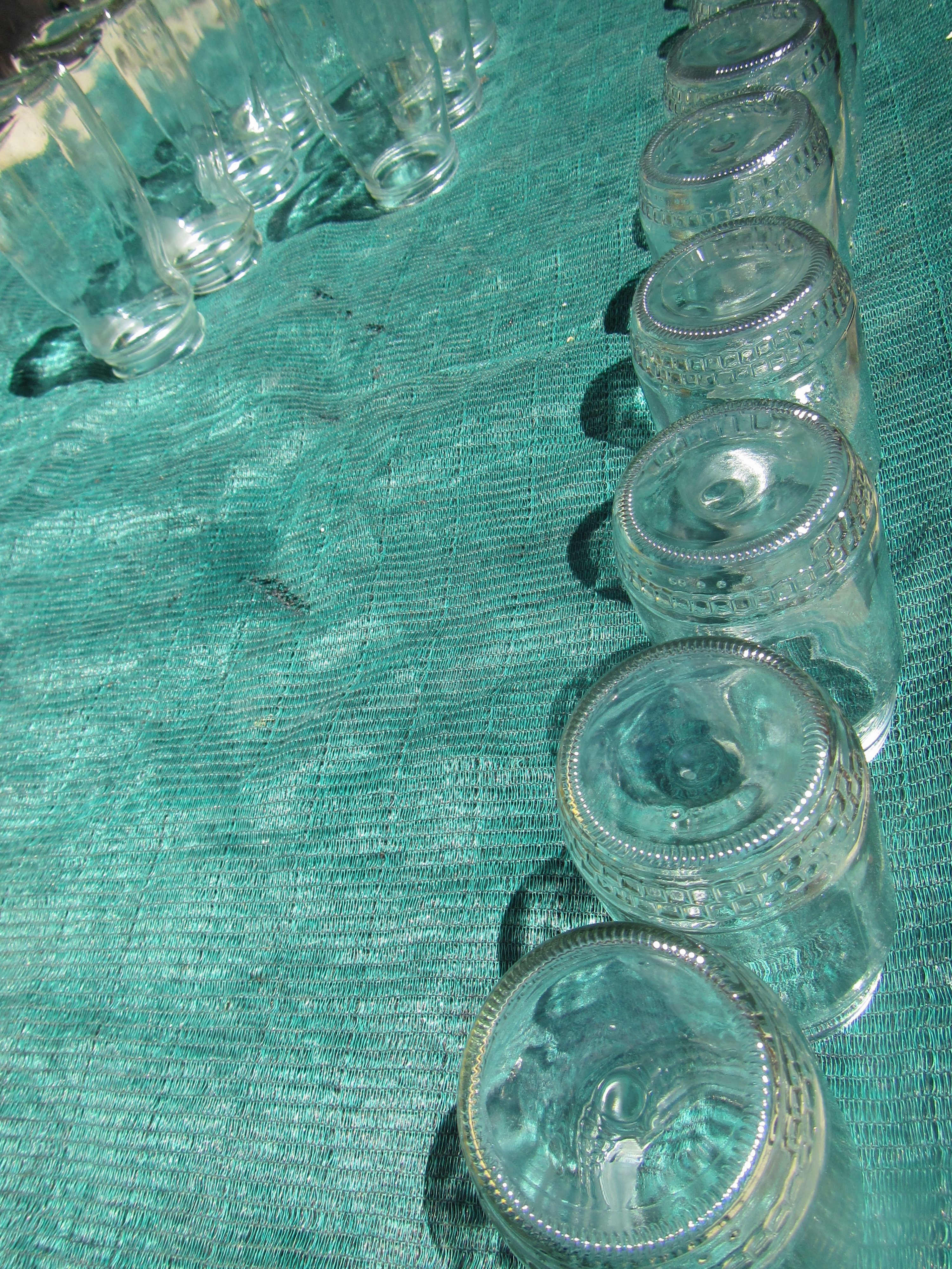
الجرار تقف في حالة انتباه
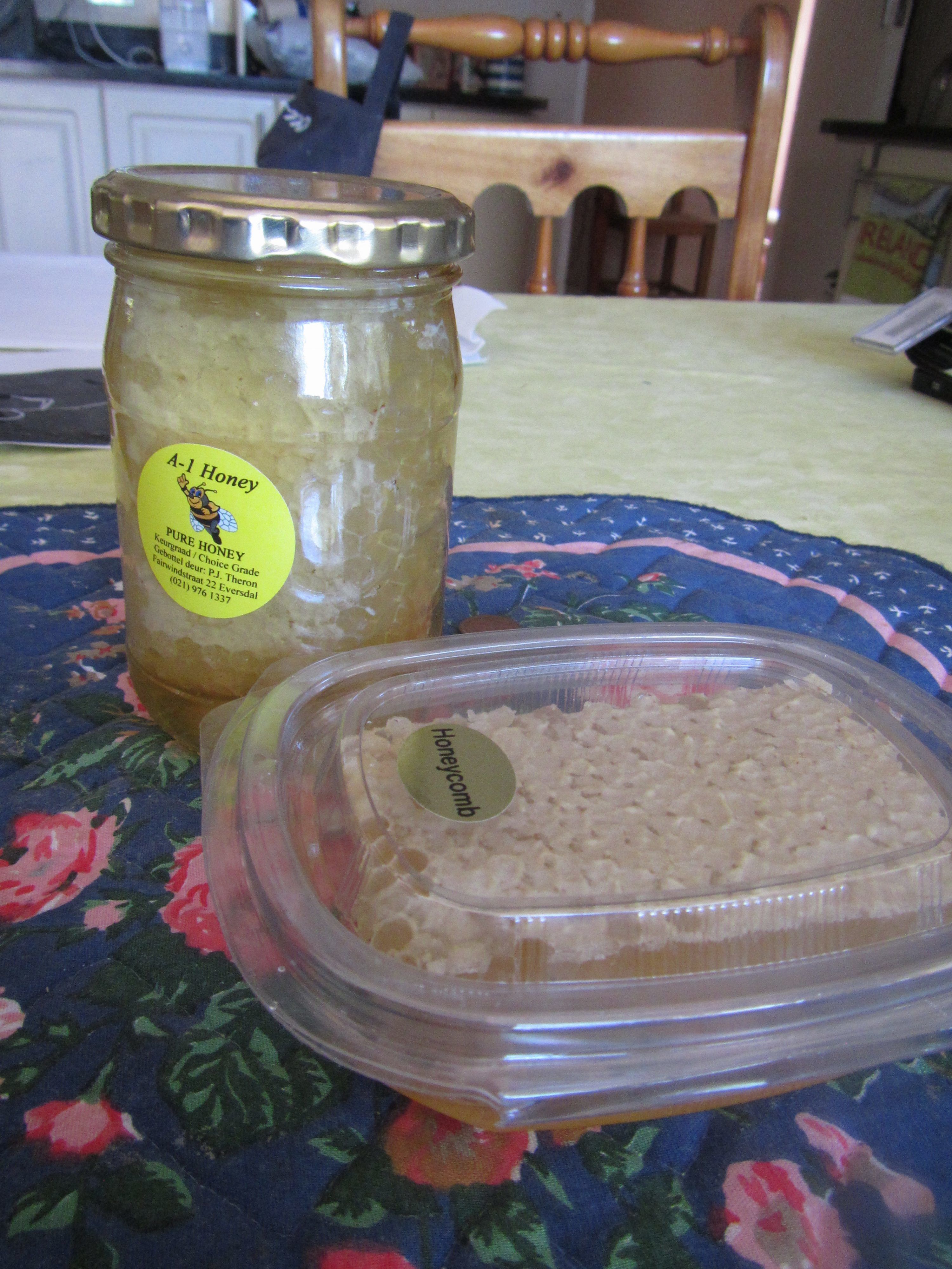
جاهز للذهاب!









